|
Anagram Alert
I
cannot really claim the credit, but of course I will, for the next James Bond novel as my contribution
will surely come to be seen as instrumental in its success.
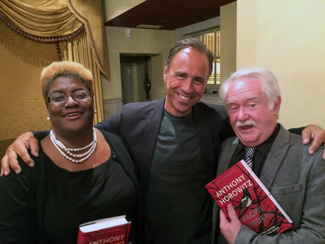
At a party to launch his latest bestseller, Magpie
Murders, the voluptuous Ayo
Onatade and myself had the chance to pester the charming and multi-talented
Anthony Horowitz (a resident of East Anglia, so therefore also a man of taste)
not just about his new novel but about Trigger Mortis, his excellent
contribution to the James Bond canon – in my not-so-humble opinion, the best of
the Bond continuations.
I asked Anthony which had been more fun, his
new take on the classic English detective story, or writing 007? He replied that writing Magpie Murders had probably been more fun, but of course should
the Ian Fleming Estate ask him to write another Bond book…. And Lo, and possibly Behold, the very next morning it was announced that Anthony would
indeed write the next James Bond adventure.
I would like to think that my raising the
subject was the spark which set in train this happy event but then again it
might just have been a fantastic coincidence.
However, the promise of a future Bond should
not distract anyone from Magpie Murders, published by Orion,
which is utterly splendid and a real treat both for those who love the
traditional ‘cosy’ English detective story and those who never could take it
quite so seriously. It is very clever, with some lovely and very knowing
sideways glances at unlovely writers and publishers and possibly the best-named
fictional detective ever in ‘Atticus
Pünd’. (Spoiler alert: Yes, this is an anagram – and a very rude one.) And
watch out for a cameo appearance from Matthew Pritchard, the grandson of Dame
Agatha Christie, to whose work Magpie Murders is a fond homage and great fun.
Party Time
An
American friend, a distinguished mystery writer and the son of an author, once
gave me an interesting piece of advice about publishing parties which he had
received from his father. ‘When the official photographers show up, put down
your glass and go stand next to an attractive woman.’
Despite never having quite seen the need to
relinquish one’s glass, there seems to be merit in this advice. Indeed, at the
splendid launch party for Martina Coles’ latest bestseller (something I predicted
with little difficulty last month) Betrayal from Headline, both I and
my fellow boulevardier Michael Dillon
(‘The Dean of Dean Street’) seem to be following the advice to the letter, as
we attached ourselves to the attractive and talented writer Martina and the
attractive and talented actress Jill Carling.

The party to celebrate Martina’s
twenty-third (I think) best-selling title was held in an exclusive penthouse
night club offering spectacular night-time views over London’s West End. Her
launches have long been an established part of the social calendar and attract
a cosmopolitan and eclectic, and always interesting, range of guests.
Personally, I was delighted to be able to
catch up with my old crime-writing chumette Denise Danks, although I am not too
sure how I feel about being caught on a security camera in the company of millionaire
playboy Prince Ali Karim and Professor Barry Forshaw.
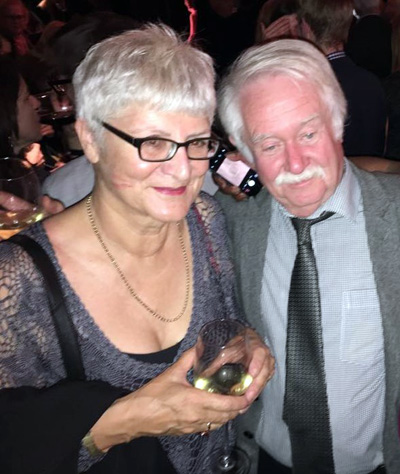  
Unconsciously
I must have been following my American friend’s advice when I found myself
photographed in the charming company of Mihaela Chirovici whilst her husband
Eugene was celebrating the advance success of his new novel The
Book of Mirrors, which is published by Century in January.
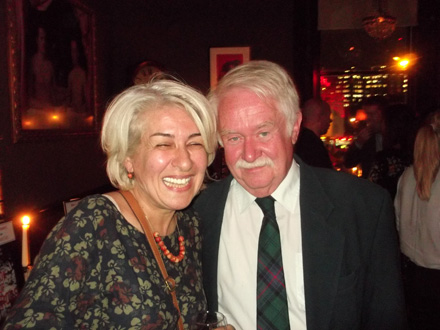
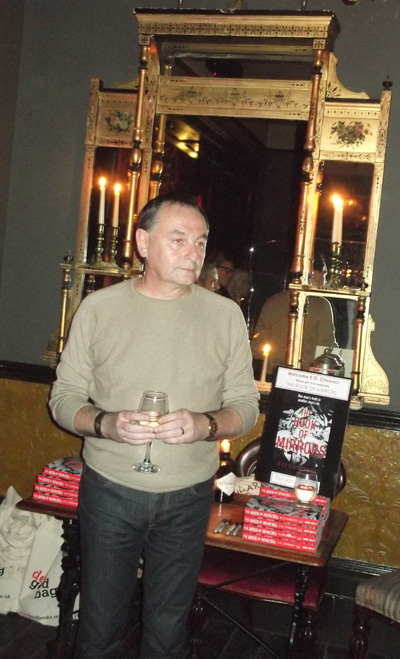
The
reason for the early celebration, three months ahead of publication, was
because Eugene’s novel – described as a ‘literary thriller’ – having been
rejected by several American agents (the book is set in the US) was then
recommended by a small English publisher to a British agent who sold the rights
in an astonishing 38 different territories almost overnight!
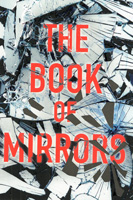 The Book of Mirrors is also
interesting in that although by no mean Eugene’s first novel, it is his first
written in English. Writing as E. O. Chirovici (pronounced Kee-ro-vitchi), Eugene was born in Transylvania into a
Romanian-Hungarian-German family and spent many years working in journalism and
television before moving to live in England and Brussels, where his wife
Mihaela currently works. The Book of Mirrors is also
interesting in that although by no mean Eugene’s first novel, it is his first
written in English. Writing as E. O. Chirovici (pronounced Kee-ro-vitchi), Eugene was born in Transylvania into a
Romanian-Hungarian-German family and spent many years working in journalism and
television before moving to live in England and Brussels, where his wife
Mihaela currently works.
International fame and fortune may have come
as something of a surprise to Eugene, who endeared himself to me when I posed
the question I have always wanted an answer to: what exactly is a ‘literary thriller’?
Without hesitation, he replied: ‘I have
absolutely no idea’.
Tiger in the Church
What
with the continuing saga of Southern Rail and now the ‘improvements’ which have
disrupted the ‘service’ offered by Greater Anglia, London is in danger of being
cut off from the civilised parts of the country, at least at week-ends.
As a result I was unable to attend several
important social and academic events in October, including the Margery
Allingham Society’s showing of the film The Tiger in the Smoke, arguably the
author’s best and certainly best-known novel, in the church, St Mary Abchurch,
where key scenes were filmed on location back in 1956.

The film, rarely seen these days, is famous
for having dispensed entirely with the character of Albert Campion, Allingham’s
popular amateur sleuth, and for being directed by Roy Ward Baker, a veteran of
British TV and film who died in 2010. Among Baker’s credits were A Night To Remember, that other Titanic
film, scripted by Eric Ambler, with whom Baker had worked in the Army
Kinematograph Unit during World War II.
Vintage Title
One
of the best titles of a reprised ‘Golden Age lost classic’, or indeed any crime
novel, must surely be Arrest the Bishop? a line many of us
have fancied saying at one time or another. I know I have.
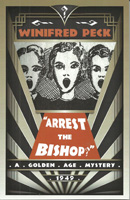
First published in 1949, Arrest
the Bishop? was one of only two detective novels written by Winifred
Peck (1882-1962), a prolific writer in other fields, who came from an
ecclesiastical family, her brother being Monsignor Ronald Knox, one of the
founders of the elite Detection Club.
Lady Winifred Peck (as she became) had
earlier tried her hand at detective fiction with The Warrielaw Jewel,
which is also reissued by Dean Street.
Depth Charge
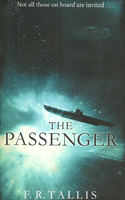 I
remember, though it must be more than a decade ago now, when Frank Tallis, the
Harley Street psychologist, burst on to the crime scene with the first of his
Max Liebermann historical mysteries set in Vienna in 1900. What I was totally
unaware of was that as F. R. Tallis, he has also had a noted career as a writer
of horror stories. I
remember, though it must be more than a decade ago now, when Frank Tallis, the
Harley Street psychologist, burst on to the crime scene with the first of his
Max Liebermann historical mysteries set in Vienna in 1900. What I was totally
unaware of was that as F. R. Tallis, he has also had a noted career as a writer
of horror stories.
His
latest – and I would have loved to have been a fly on the wall when he pitched
the idea to his agent – is the story of a haunted Nazi U-boat in the North
Atlantic in 1941. The Passenger, published by Picador this month, is cruelly
atmospheric on two levels: the supernatural and the claustrophobic.
Having once spent a day in a real U-boat,
albeit one in a museum in Chicago about 1,500 miles from the sea, the cramped
confines alone were enough to scare me witless let alone the prospect of a
supernatural passenger.
Hall of (Deserved) Fame
Congratulations
are due and deservedly so to my old and distinguished friend Margaret Maron who
has recently been inducted into the North Carolina Literary Hall of Fame.
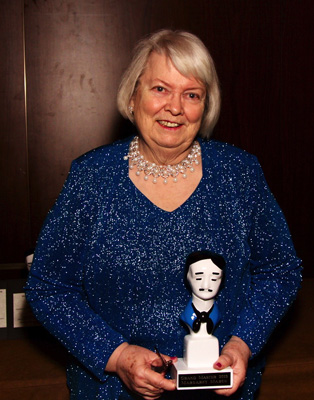
A
native ‘Tar Heel’ (someone from North Carolina) Margaret is the multi-award
winning author of 30 mysteries and two short story collections and the creator
of two memorable crime-fighting characters: New York cop Sigrid Harald and the
more local ‘down home’ district judge, Deborah Knott.
Also to be congratulated is my old pal Len
Deighton, whose brilliant thriller SS-GB has enjoyed three weeks in The
Times Top Ten paperback bestseller lists, some 38 years after first
publication.
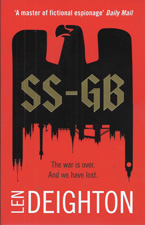 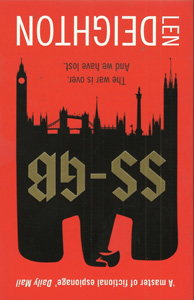
The new edition,from HarperCollins, comes
with an eye-catching cover – note the London skyline upside down in the eagle’s
tail feathers – and will have introduced a new generation of readers to Len’s
classic spy story set in Nazi-occupied Britain in an alternative 1941. Expect
to see the book back in the Top Ten around about February next year when the
filmed mini-series is broadcast by the BBC.
C.S. Aye, Scotland
The
gang’s all here: Siobahn Clarke, Deborah Quant, Malcolm Fox, Big Ger Cafferty,
Darryl Christie and, of course, John Rebus, now supposedly retired from routine
police work but determined not to go quietly into…well, anywhere other than
perhaps the Oxford Bar.
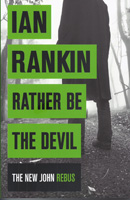
No prizes for guessing these are characters
created by Ian Rankin and in his new novel, Rather Be the Devil from
Orion, he pulls them on like a pair of fine kid gloves and manipulates them
brilliantly. The plot expands beyond Edinburgh gangland rivalries to include a
major money-laundering operation and a cold case of murder, but the really
fascinating stuff is the in-fighting and jostling for power among the Scottish
police themselves.
Sometimes one wonders how justice ever gets
served under these circumstances, but thanks to John Rebus it usually does,
though not necessarily always legally.
Sad Passing
I
was saddened to hear of the death, aged 74, of prolific American writer and
anthologist Ed Gorman.
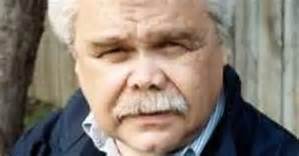
I
first crossed trails (as he might have said) with Ed in 1992 when he, as one of
the editors, invited me to contribute to the ‘reader’s companion’ to crime
fiction The Fine Art of Murder and subsequently to The Big Book of Noir in
1998. I last heard from him two years ago when he thanked me for my review of
his political thriller Blindside when it was published
here, but I was always in his debt for his description of this very column. In
2010 he introduced many American readers to Getting
Away With Murder thus: “GAWM is superior to just about everything in
internet mysterydom. When I say ‘column’ what I am really saying is a piece of
work that is a magazine unto itself.”
That was a generous tribute indeed from a
respected commentator, noted blogger and a noble champion of the crime, horror
and western fiction genres.
|
|
Previously…
The great problem, but also the great strength, of crime fiction is the series which features the same hero, heroine or ensemble cast. The writer not only has to create interesting characters but keep them interesting, ringing the changes through different plots and settings, for lovers of genre fiction, myself included, don’t want to read the same book again, but do want more of the same winning formula.
With each new book in a series, the writer has to be conscious of the ‘new readers start here’ syndrome and has to establish his or her characters and their back stories as quickly and unobtrusively as possible (so as not to bore dedicated readers). This is a challenge which has to be faced whether you are Michael Connelly writing another Harry Bosch story, Ian Rankin with a new Rebus, Patricia Cornwell with her latest Kay Scarpetta, or a fledgling author tackling his or her ‘second in the projected series’ book.
There are some people who will refuse to read a series of crime novels unless they can do so in the order they were written and quite often they are fanatical about this. I was once confronted by an earnest young man with the dead eyes of a shark who told me that he had bought six of my ‘Angel’ books some years ago but would not start to read them as he had not acquired the first one in the series. I found it difficult to sympathise with his plight and totally failed to understand why he had travelled many miles out on a winter’s night to a book-signing session, not to buy a book, but just to tell me that.
I will certainly not be recommending to him (should he disregard the exclusion order), but I happily do so to everyone else, the new Inspector Bordelli mystery Death in the Tuscan Hills by Marco Vichi, published this month by Hodder.
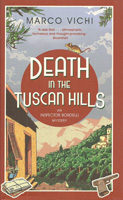
This is the fifth Bordelli book in Marco Vichi’s much-praised series featuring the obstinate, ageing Florence-based policeman and in terms of plot, a direct follow-up to Vichi’s prize-winning Death in Florence.
Set in 1967, a year after the famous floods which swamped Florence – and Bordelli’s frustrated investigation of the particularly horrible murder of a young boy, Death in the Tuscan Hills sees the disillusioned Bordelli resigned from the police and literally headed for the hills. Moving to an isolated cottage in the countryside, much to the amazement of colleagues (and this reader) who can’t believe he does not wish to live in Florence, Bordelli’s struggles with a rural life, a waning sex life and his determination to learn how to cook and how to grow vegetables, are charmingly described. Fairly soon, though, those very Tuscan Hills he has retreated to give him the opportunity to mete out the justice avoided by the perpetrators of the murder which still haunts him. Unobtrusively and very cleverly, Bordelli steps outside the law on a methodical and wonderfully understated campaign of vengeance.
Death in the Tuscan Hills is so well-written (and well translated, by Stephen Sartarelli) that it is perfectly possible to read it without having read Death in Florence. Bordelli’s back story, going back to his experiences in the war, is carefully infiltrated into the narrative rather than dropped in an indigestible chunk on the unsuspecting reader, and through a rich and colourful depiction of Tuscan life, history and culture, the steeliness of Bordelli and his personal vendetta becomes clear.
Elegant, engaging and intelligent, Marco Vichi’s Inspector Bordelli series are highly recommended – in any order.
Another Italian Job
The loyal reader of this column (who lives in Martha’s Vineyard – she knows who she is) is well aware that I am a great admirer of the work of Martin Cruz Smith; not just his splendid novels featuring Russian detective Arkady Renko but also his stand-alone thrillers such as Tokyo Station – as it was called in 2002 but has since been retitled December 6.
His new novel sees him return to World War II but this time as the war is ending rather than starting (December 6 1941 for those slow on the uptake) and the setting is not Japan but Venice and the Salò area around Lake Garda which, in 1945, was the last stand of Mussolini’s Fascist regime.

The Girl from Venice, superbly published with endpaper maps by Simon & Schuster this month, is a wonderfully evocative, richly-textured, poignant and romantic thriller which displays Cruz Smith’s considerable talent for creating characters which the reader cares about despite (sometimes because of) their weaknesses and sometimes despite the uniforms they wear. That sounds trite but it is a skill to be cherished.
As the novel opens, the central character Cenzo is doing a spot of night fishing in a Venice lagoon patrolled by German gunboats, when in his nets he catches the seemingly drowned body of a young girl. Except the girl isn’t dead and she is from a wealthy Jewish family and on the run from the SS. Cenzo turns out – of course – to be a bit more resourceful and worldly-wise than the average Venetian fisherman and with plenty of personal ghosts already. He has to contend with a film-star brother who may or may not be a die-hard Fascist, the memory of a faithless wife killed in an Allied air raid and a younger brother who died out on the Venice lagoon, as well as a blotted career in in Italian air force having refused to drop gas bombs on civilians in Abyssinia.
But Cenzo’s shoulders are broad and he takes on the role of protector of the Jewish girl, sailing a dangerous course between partisans, the German army, the SS, informers and turncoats, in a quest to discover who betrayed her family to the Nazis. Added to all that, Cenzo is also, by family tradition, expected to marry his brother’s widow but in that too he proves eminently resourceful.
The Girl from Venice is peppered throughout with cleverly drawn characters desperate to survive, though not always succeeding, the last few days of a war clearly lost. Not all humanity is lost, however, and after a dramatic denouement on the fish docks of the Rialto, there seems to be hope for our hero.
Not Nordic Noir
I do not think that the name of Adam Lebor has made it into any vade mecum of Nordic crime fiction produced by Professor Barry Forshaw. There is no reason why he should have for, as far as I am aware, the well-travelled journalist Adam Lebor has lived nowhere nearer the Arctic Circle than Leeds. (Although the late Robert Barnard, after a teaching career in Norway, settled in Leeds on his return to England to concentrate on his crime writing as he found the local accent comforting and familiar after several years in Tromsø.)
The thought only crossed my mind as Lebor’s new thriller from Head of Zeus is called The Reykjavik Assignment and features a backdrop of the Icelandic capital on the cover.
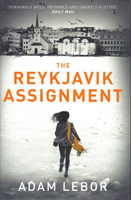
But fear not, for this is a fast-moving international conspiracy theory thriller (we only get to Iceland on page 335) in the series The Geneva Option, The Budapest Protocol and The Washington Option featuring ‘covert negotiator’ for the United Nations Yael Azoulay – possibly the oddest-named heroine in thrillerdom, although a high score at Scrabble. The titles may seem familiar to fans (of a certain age) of Robert Ludlum and the idea of a special UN counter-espionage force was mooted years ago by Alistair MacLean in a series of outlines and treatments featuring UNACO – the United Nations Anti-Crime Organisation – which were turned into novels by John Denis, Hugh Miller and Alastair MacNeil (unlikely, but true).
Adam Lebor’s thrillers, however, are grounded in realpolitik and he is particularly knowledgeable here on the situation in the Middle East. Most impressive of all is the fact that his new novel, published three weeks before the US elections, has a female American President…
Return to Venice
I am also faintly reminded of Robert Ludlum by the new novel from Mark Mills, Where Dead Men Meet, out this month from Headline Review, in the sense that the plot is basically a frantic chase around Europe where a hero with no memory of his origins (he’s an orphan rather than an amnesiac) is pursued by a hit-men from a sinister organisation which wants him dead for reasons he cannot fathom.
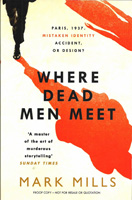
There is a pace to Where Dead Men Meet which I do not recall from Mills’ much more leisurely atmospheric thrillers such as The Information Officer and House of the Hanged, both of which build the suspense gradually as the characters responded to the historical events going on around them. In his new book, Mills uses roughly the same historical period, 1937, and although the rise of Nazism plays a part in one crucial sub-plot, the main narrative relies on constant action to propel it along. Which it does in a positive maelstrom of violence, double-crossings and escapes from England to France, Germany, Switzerland, Italy and Croatia before the hero finally realises what is going on and why he’s a marked man, but only after shoot-outs, chases in cars and boats and a life and death struggle in a Venice canal.
It may be a different approach for Mark Mills, but he pulls off the helter-skelter action stuff with panache, albeit with a fairly high body-count and an underlying (if not always convincing) theme of family relationships. If one may be allowed to carp, of the two most interesting members of the supporting cast, one drops out of the action far too soon and the other does not appear until late in the book. That said, Mills also manages to infuse his story with nuggets of middle-European history not normally covered in the text books.
Stocking Filler
There used to be an annual anthology of short crime stories called Winter’s Crimes and its publication always marked the start of the Festive season. Published by Macmillan, Winter’s Crimes ran for 24 volumes and over nearly a quarter of a century featured the cream of British crime writers and the occasional American, including Colin Dexter, Geoffrey Household, Margaret Yorke, Anthony Price, Patricia Highsmith and Ellis Peters. The last in the series, Winter’s Crimes 24, appeared 24 years ago in 1992 and contained a story featuring a certain Inspector John Rebus by a then little-known writer called Ian Rankin.

This year’s attempt at a crime fiction stocking-filler also contains a story featuring John Rebus by Ian Rankin, although both are now promoted in the sense that they appear in a collection of “classic crime stories” alongside the work of authors including: Arthur Conan Doyle, Margery Allingham, Dorothy L. Sayers, Ngaio Marsh, Edmund Crispin, G.K. Chesterton and Carter Dickson.
Murder Under the Christmas Tree, from Profile Books, differs from the Winter’s Crimes series, which I think had a policy of living crime writers contributing original stories, in that of its contributors, only Ian Rankin and Val McDermid are still with us.
It is, nonetheless, an excellent value-for-money collection (despite being rather vague on biographical and bibliographic information) and a useful introduction for the uninitiated to some of the great fictional detectives: Sherlock Holmes, Lord Peter Wimsey, Gervase Fen, Father Brown, Roderick Alleyn, Brother Cadfael and Albert Campion.
Some of the stories have, it must be said, been anthologised many times before, including Margery Allingham’s The Case Is Altered, which appeared in the British Library’s Crime Classics seasonal anthology Silent Nights only last Christmas.

Continuing on the Christmas theme, I must mention – because it is the one Christmas party I have been invited to – that Heffers Bookshop in Cambridge will be hosting their annual Murder under the Mistletoe party on Thursday 8th December.
I can highly recommend this particular event, having attended several in the past, just as I can the generous provision of mince pies and the rather lethal hot punch on offer.
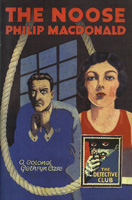
And should you want a classic crime hardback small enough to fit into a mantelpiece stocking, I can do no better than recommend The Noose by Philip MacDonald, reissued as part of Collins Crime Club’s Detective Club series.
Philip MacDonald was one the most imaginative British writers of the so-called ‘Golden Age’ and The Noose was what, these days, we would call his ‘breakthrough novel’ when first published in 1930. This attractive reprint (only £9.99) comes with an intelligent Introduction written in 1925 by the late Harry Keating.
More Big Hitters
Some rather more modern, though equally popular, fictional detectives ensured that October was a bumper month for crime and mystery. Both Harry Bosch and Kay Scarpetta have been stalwarts of the crime scene for more than a quarter of a century and neither they nor their creators show any sign of flagging.
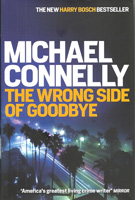 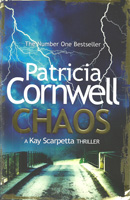
Harry Bosch, now working as a part-time detective, reappeared in The Wrong Side of Goodbye by, of course, Michael Connelly, and published by Orion. Dr Kay Scarpetta, the forensic investigator and her extended family, featured in Chaos by Patricia Cornwell, from HarperCollins.
Boulevardier Ancien
I realise that to all intents and purposes I am now on the far side of history, but occasionally my spirits soar when I realise that I may have some skill or a nugget of knowledge to pass on to the young people, perhaps a craft they cannot find on the ubiquitous screens they concentrate on.
Last month, for example, I arrived – the customary five minutes early – at a book launch party where the refreshments were being dispensed by a platoon of young Publicity Assistants from the hosting publisher who enquired, very charmingly, if I would like white wine or Prosecco; but there being an ‘R’ in the month I asked if I could possibly have glass of red wine.
There was, I was assured, absolutely nothing unreasonable in my request and the blushful Hippocrene would be produced forthwith. Several minutes elapsed and then several more. Publishers and fellow scribes expressed concern that I was still unarmed with a beverage despite my protestations that one was ‘on the way’ but when yet more minutes (which seemed like hours) had crawled by, investigation was called for.
The problem, it emerged, was that the red wine so generously on offer came in bottles with corks and though an old-fashioned corkscrew of the type known as ‘the waiter’s friend’ was clearly available, none of the younger hosts appeared to know how to use it and so a demonstration of opening a bottle ‘old school’ was called for.
It was rather gratifying to find myself useful for once.
Toodles!
The Ripster
|